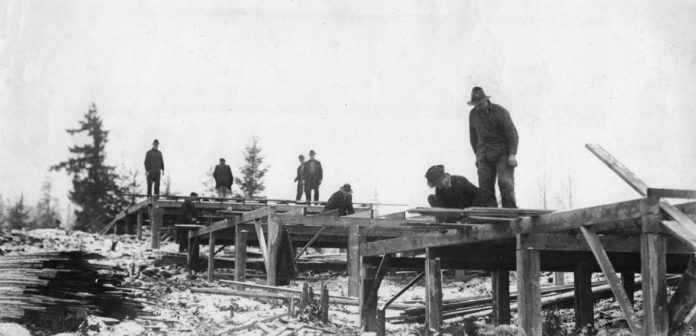Coal mining boomed in Washington during World War I. Miner’s wages rose, fueled by increased coal prices as production expanded. By war’s end, prices began falling and coal companies throughout the nation tried reducing wages. In 1921, Black Diamond’s coal miners resisted and were locked out by Pacific Coast Coal Co. Strikebreakers replaced union miners and a bitter labor dispute ensued. Stepping up the heat, Pacific Coast forced union miners from rented houses located on the company-controlled townsite.
Tim Morgan, an 80-year-old, former coal miner came to the striker’s rescue. Morgan had long squabbled with the coal company and owned land just across the section line, where company rules couldn’t be enforced. In 1907, Morgan made available a large speaker’s stump on his property where the United Mine Workers union was able to organize coal miners. Fifteen years later company officials learned of Morgan’s plans to provide land for building union homes, so offered $30,000 to buy his land. Morgan turned them down and instead sold 16-acres to the union at a price not to exceed $2,500.
Morgan nailed the plank in the first of 200 homes planned by the union. A townsite was laid out and soon became known as Morganville. Each house had four rooms and were generally identical. This photo shows the assembly line construction for three home foundations and was dated June 10, 1922. The accompanying caption read, “Striking miners starting construction of a block of Union-owned houses.” It comes courtesy of JoAnne Matsumura, an Issaquah historian and collector of historic photos.
This weekend, Black Diamond celebrates its Labor Day roots with a parade at 10 am Monday and festivities through the weekend. For more information, visit blackdiamondlabordays.org or check their Facebook page at Black Diamond Labor Days.








